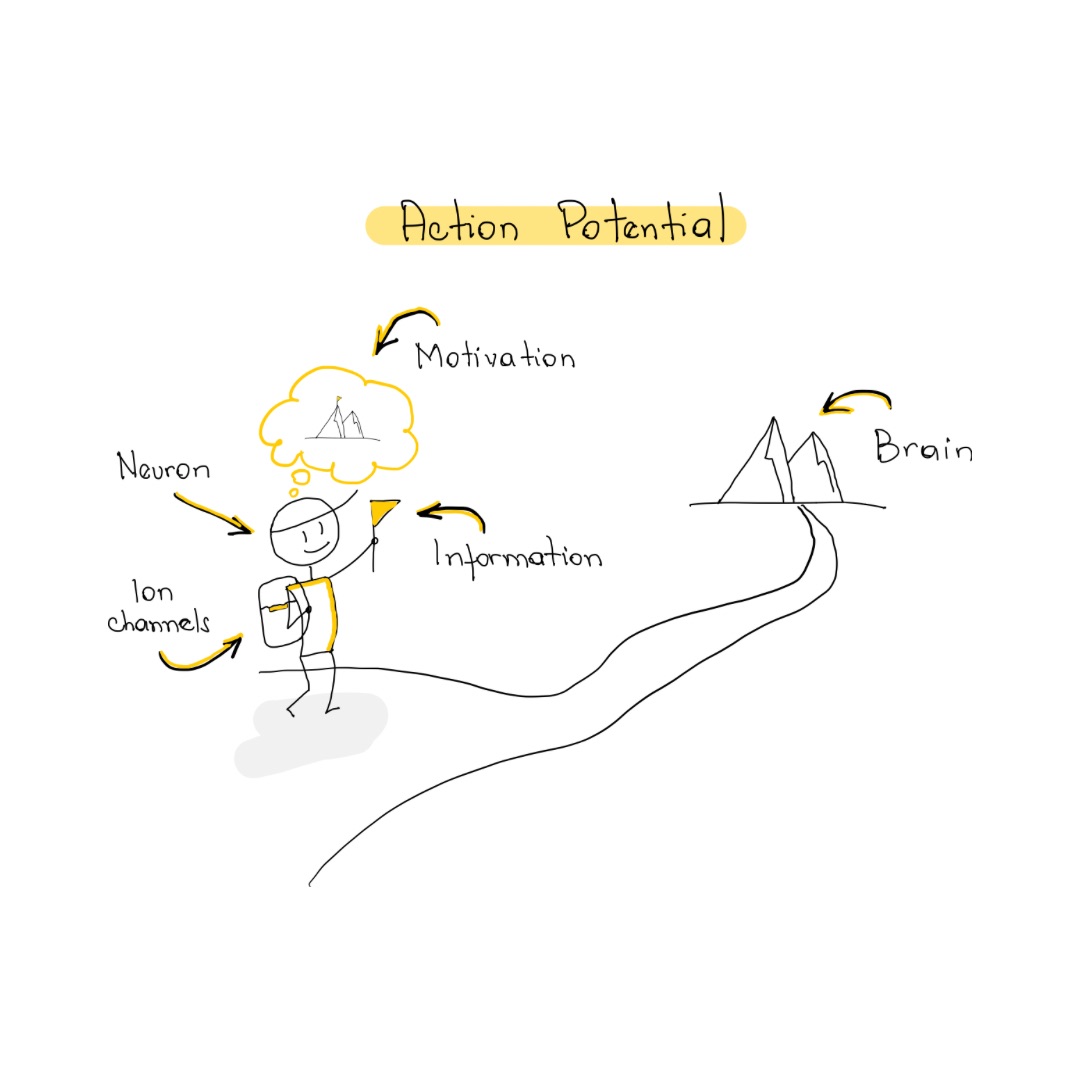The action potential is like an electrical spark in nerve cells, or neurons. When a neuron gets a signal, there’s a quick change in the electrical vibe around its membrane. This sparks a wave of ups and downs along the axon, sending info from one end of the neuron to the other. The science behind this involves opening and closing ionic channels, allowing ions to pass and creating the electrical buzz.
Imagine the brain as a mountain that thoughts aim to conquer. Neurons act as climbers carrying info. The action potential is the climber’s motivation to ascend; it’s the energy that drives it, the inspiration to overcome hurdles. The ionic channels in the membrane are like the climber’s gear – picks and ropes – helping them overcome barriers. When motivation is high and the gear works well, the climber (or info) reaches the mountain’s top, symbolizing successful message transmission in the brain.
In this metaphor, the action potential is compared to motivation to convey the idea of impulse and energy. In the neuroscientific realm, the action potential is a specific electrical event, not directly tied to psychological motivation.
Yet, when it comes to crafting a more effective “action potential” in everyday life, one can draw inspiration from motivation. Setting clear goals, finding meaning in actions, and maintaining a positive mindset can serve as effective boosters, akin to motivation in the metaphorical sense. Cultivating healthy habits, seeking ongoing learning, and fostering positive social connections are also ways to nurture a more enduring and impactful “motivation” across various aspects of life.




